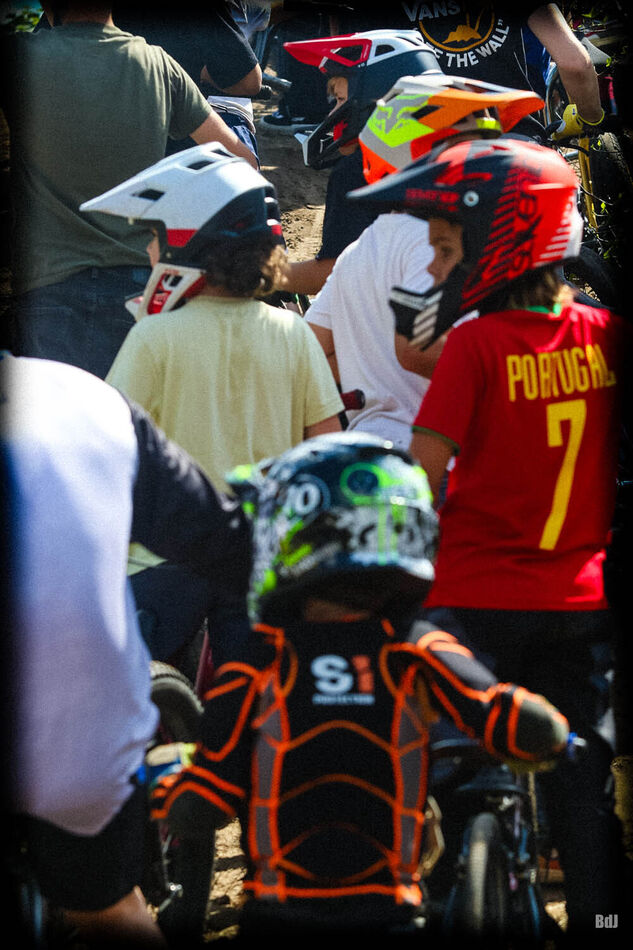 BMX, short for Bicycle Motocross, has experienced a significant surge in popularity over the past few decades. What was once a niche sport, primarily enjoyed by adrenaline junkies and young riders, has become a mainstream brand. Several factors have contributed to the growth of BMX in popularity. This article will explore these key factors to understand why BMX is rising.
BMX, short for Bicycle Motocross, has experienced a significant surge in popularity over the past few decades. What was once a niche sport, primarily enjoyed by adrenaline junkies and young riders, has become a mainstream brand. Several factors have contributed to the growth of BMX in popularity. This article will explore these key factors to understand why BMX is rising.
1. Accessibility and Inclusivity
BMX's accessibility is truly one of its greatest strengths. Unlike some extreme sports, you don't need a massive wave, mountain range, or an elaborate skatepark to enjoy BMX. You can practice this sport virtually anywhere there's a flat surface. This accessibility extends to people of all ages, genders, and skill levels, making it a sport that welcomes everyone. The simplicity of a BMX bike and the freedom it offers riders to explore their surroundings are undeniable attractions.
2. Thrilling Nature
BMX thrives on adrenaline and excitement. Riders perform various tricks, jumps, and stunts that require skill, balance, and courage. From backflips to tailwhips, BMX tricks push the boundaries of what's physically possible on two wheels. The thrill of nailing a new trick or landing a big jump is intoxicating. It keeps riders coming back for more.
 This sense of accomplishment and the constant pursuit of pushing one's limits are at the core of BMX's popularity. BMX events have become so popular that they now attract avid fans. Some of these fans create video content for social media to show all the tricks they can do with their bikes. Many enjoy bike games on console and mobile devices purely for the thrill. If casino gaming piques your interest, you can delve into slots themed around biking. MrCasinova.com highlights the top online casinos that offer generous bonuses for playing your favorite sports-themed slots. Naturally, these bonuses can also be utilized for card games.
This sense of accomplishment and the constant pursuit of pushing one's limits are at the core of BMX's popularity. BMX events have become so popular that they now attract avid fans. Some of these fans create video content for social media to show all the tricks they can do with their bikes. Many enjoy bike games on console and mobile devices purely for the thrill. If casino gaming piques your interest, you can delve into slots themed around biking. MrCasinova.com highlights the top online casinos that offer generous bonuses for playing your favorite sports-themed slots. Naturally, these bonuses can also be utilized for card games.
3. Competitive Scene BMX has a rich competitive scene that offers something for everyone. BMX racing is a high-speed and high-stakes with its roots in motocross. Dirt jumping involves launching off massive dirt jumps to perform aerial maneuvers. There are various disciplines to cater to different preferences and skill sets. This ensures that there's a competitive avenue for riders of all backgrounds. Major events like the X Games and the inclusion of BMX in the Olympic Games have elevated the sport's status. They have helped draw top athletes and larger audiences.
BMX has a rich competitive scene that offers something for everyone. BMX racing is a high-speed and high-stakes with its roots in motocross. Dirt jumping involves launching off massive dirt jumps to perform aerial maneuvers. There are various disciplines to cater to different preferences and skill sets. This ensures that there's a competitive avenue for riders of all backgrounds. Major events like the X Games and the inclusion of BMX in the Olympic Games have elevated the sport's status. They have helped draw top athletes and larger audiences.
4. Urban Culture and Street Riding
BMX's strong ties to urban culture have given it a unique identity. Street riding, in particular, is about using the cityscape as an obstacle course. Riders navigate rails, stairs, and ledges, adding a rebellious and artistic dimension to the sport. The DIY ethos of street riding encourages riders to explore their creativity and adapt to their surroundings. This makes it a sport that resonates with urban youth seeking an outlet for self-expression.
5. Influence of Media and Documentaries
The media has contributed to the rise of BMX. Magazines, websites, and TV networks have covered BMX extensively. They have introduced it to new audiences and helped it gain legitimacy as a sport. Iconic documentaries like "Riding in the City" and the classic "Rad" have given viewers an inside look at the passionate people who have shaped BMX and the communities they've built. 6. Social Media and Online Communities
6. Social Media and Online Communities
The digital age has provided BMX with a global platform for growth. Riders and fans use platforms like TikTok, Instagram, and YouTube to share their adventures, tricks, and experiences. These platforms have fostered a sense of community among BMX enthusiasts worldwide. They allow them to connect, share knowledge, and inspire one another. The presence of BMX on social media ensures that the sport is continually evolving as riders push their boundaries and showcase their talents to wide audiences.
7. Supportive Industry and Sponsorship
The BMX industry has evolved to meet the demands of its growing community. Companies manufacturing BMX bikes, components, and protective gear have invested heavily in research and development. They have come up with lighter, more durable, and better-performing equipment. Sponsorship deals with professional riders not only provide financial support but also serve as a mark of recognition for their skills and dedication. They motivate the next generation of BMX riders to aim high and pursue their dreams.
8. Cultural Evolution and Fashion Trends
BMX has influenced culture and fashion just as much as the sports world. BMX riders are associated with a distinctive style. It typically includes baggy pants, oversized shirts, and colorful helmets. Many have embraced the style and used it to make fashion statements. This unique blend of athleticism and urban flair resonates with youth culture and helps BMX find its place in mainstream fashion.
9. Progressive Trick Evolution
BMX is in a constant state of progression. Riders are continually pushing the boundaries of what can be achieved on a bike. They are constantly inventing and perfecting new tricks that leave spectators in awe. New tricks within the community keep the sport exciting and attract new riders.
10. Local BMX Communities and Events
BMX thrives at the local level. Communities of riders organize grassroots events, competitions, and jams. These local gatherings not only serve as a platform for riders to showcase their talents but also  foster a sense of camaraderie and mentorship among participants. These events attract riders of all ages, allowing the sport to pass down its traditions and skills to new generations. The inclusion of BMX in school and youth programs has been instrumental in introducing the sport to a younger audience. BMX clubs, after-school programs, and school tracks have given kids a safe and supervised environment to learn and practice the sport. These initiatives promote physical activity and instill discipline and sportsmanship in young riders.
foster a sense of camaraderie and mentorship among participants. These events attract riders of all ages, allowing the sport to pass down its traditions and skills to new generations. The inclusion of BMX in school and youth programs has been instrumental in introducing the sport to a younger audience. BMX clubs, after-school programs, and school tracks have given kids a safe and supervised environment to learn and practice the sport. These initiatives promote physical activity and instill discipline and sportsmanship in young riders.
11. Environmental Awareness and Sustainability
BMX has evolved to become more environmentally conscious. As concerns about sustainability emerge, many riders have embraced eco-friendly practices in the sport. These initiatives include reusing and repurposing old bike parts, choosing sustainable materials for BMX equipment, and reducing waste.
In conclusion, the growing popularity of BMX results from a combination of various factors. Its accessibility, thrilling nature, and diverse competitive scene have significantly contributed to its status as a dynamic and widely celebrated sport. As BMX continues to evolve, its future looks bright. It promises further growth and innovation in the future.




 After doing a BMX 'zine for ten years (1987 - 1996) FATBMX made it on the internet. The year was 1998. Here to stay.
After doing a BMX 'zine for ten years (1987 - 1996) FATBMX made it on the internet. The year was 1998. Here to stay.